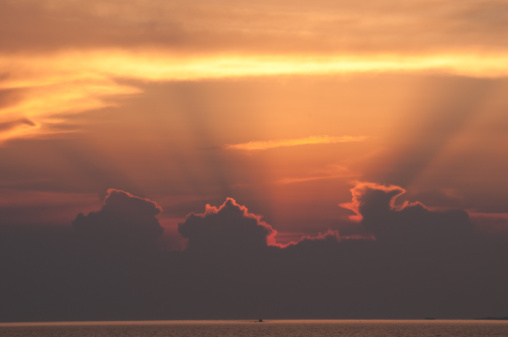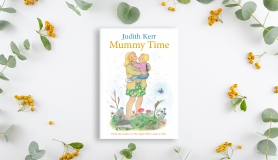Discovering different ways of celebrating a special date in the calendar can also enhance our celebrations. I liked the Spanish custom of sea swimming after midnight, and the maypole dancing that features in Swedish and Finnish parties. It was interesting just how many common threads there were throughout: dancing, traditional songs, feasting, the gathering of medicinal herbs, magic and ritual, and perhaps most importantly: fire and water. Everyone seems drawn to lighting big celebratory fires at this time of year and in a lot of places it is customary to leap the flames for health and fortune. If you’re planning your own Midsummer/Summer Solstice celebration, why not draw inspiration from around the world to create something really magical. You can also check out some ideas for how to celebrate Summer Solstice with your family here.
*WALES *
Gathering Day is the traditional Welsh festival of Midsummer or Summer Solstice when people would gather the herbs, such as St John’s Wort, that they needed for use throughout the winter. Other plants that would be gathered were the first of the harvest, such as peas and beans. The herbs gathered at this time were considered especially powerful as they had been ‘charged’ by the Midsummer sun at the height of its powers. I couldn’t find much about current Gathering Day celebrations online, so if anyone knows of any feel free to share them here.
BULGARIA
Enyovden is the Bulgarian celebration of Midsummer, falling on the same day as the Orthodox church’s St. John the Baptist’s Day; 24th June. It is both a religious festival and a traditional folk celebration, when women from the villages gather the night before to collect special herbs and sing spells. The herbs are thought to heal all known diseases, and they are woven into crowns by the women. Traditional dances take place around huge fires and there is fire-leaping and a practice of dancing on the smouldering embers. People stay up all night to welcome the dawn, and it’s believed that anyone witnessing the sunrise will have good health all year.
GREECE
Klidonas is the Greek celebration of Midsummer when May Day wreathes were taken from the doors of village homes and burnt in a ceremonial bonfire lit by the men and boys of the village. It was also the time when girls could find out about potential suitors by performing a silent water ritual. Fire-jumping over communal fires was considered good luck as the fire cleansed and renewed the jumper as they made wishes. The fires are part of celebrations today.
LATVIA
J??i (the Latvian for John) or L?go is a huge festival in Latvia, as popular as Christmas. Taking place on 23rd and 24th June, the celebration features bonfires, feasting and much dancing and singing of the many traditional folk songs. One belief is that ferns blossom for the night of J??i and seekers go alone to find them – if found, tradition states that you’ll have a spiritual revelation. In the city of Riga, there is a market selling wild medicinal plants, oak leaves and flower crowns, plus the famed L?go foods like cheese with caraway seeds and p?r?gi.
POLAND
Noc ?wi?toja?ska (St John’s Night) on 23rd June used to be called Kupala’s Night in Poland, after a Slavic goddess of love and fertility. It is a celebration of love, fertility, water and magic. Fires are lit and boys leap the flames to impress girls, while the girls adorn themselves with flower wreaths which they then float in the sea or rivers as part of a ritual to discover their romantic futures. Fern flowers were also sought in Poland, as in Latvia (see above). Fires and fireworks are still part of celebrations today.
ROMANIA
Wreaths and fires are part of the Romanian celebrations of Dr?gaica or Sânziene too. Romanian villages host Midsummer fairs, the most famous being the Dr?gaica fair which takes place every year from 10th to 24th June in Buz?u. Young women of the villages gather flowers, including Lady’s bedstraw, on Midsummer Eve, and weave them into crowns. After dancing round a bonfire, the crowns are thrown over the houses: it is said that wherever they land, someone in that house will die, or if they stay on the roof good health is bestowed on the inhabitants. It is the most powerful night for magic spells and also a time when fairies are believed to be about – there are many stories of possession or magic activity taking place particularly near forests and men especially are advised not to go out alone.
RUSSIA
Ivan Kupala Day (John the Baptist) is the traditional Summer Solstice celebration in Russia which takes place on 24th June. Again, girls use wreaths floated in water to discern their romantic fortunes and people dress in traditional Slavic costumes. Flowers and herbs for healing purposes are gathered while there is still dew on the ground. Huge fires are lit and leaping the flames is considered to bring good luck and purification. It is considered bad luck to sleep during Kupala Night, when evil spirits are particularly active.
SPAIN
San Juan Night takes place on 23rd June and parties and celebrations are usually held on the beach with roaring bonfires, drink, food, and friends. The theme is the purifying qualities of fire and water. Fires – called tequeos or ‘people of the dance’, are lovingly built on the beach and kept burning all night. It’s believed that if someone jumps over the fire three times on San Juan’s Night they are purified and their problems are burnt away. Washing the face and feet three times after midnight is supposed to bring luck and health for the coming year. Jumping into the sea after midnight is common practice, and special foods also feature.
SWEDEN
One of the most important celebrations of the Swedish year, Midsommarafton takes place on the Friday and Saturday between 19th and 26th June, so this year it falls on 21st and 22nd June. A maypole (midsommarstång), decorated with flowers, is a big part of the celebrations with traditional music and folk songs accompanying the dancing. One of the folk songs sung is Seven Beautiful Girls in a Ring (sju vackra flickor i en ring). Wildflower wreaths adorn heads, and traditional folk costume is often worn. The gathering of the first of the harvest; chives, potatoes, strawberries are served alongside soused and pickled herring as part of the feasts. Magical rituals at this potent time of year feature too – garlands of flowers placed under pillows are believed to enable young people to dream of romantic futures. Garlands placed over houses bring health and good fortune to the inhabitants. Herbs gathered at this time have special powers.
FINLAND
Juhannus is a big festival in Finland, where people close up shop and head to country retreats for the Midsummer celebrations. It’s no wonder the Finnish celebrate Midsummer when the sun doesn’t set at all, as it contrasts their long dark winters. Bonfires are burnt into the night and people go out to seek the mystical fern blossom (see Latvia and Poland above). Water also features, and fires are often built beside the sea or at lakesides. Young birch trees can be seen decorating doorways to welcome visitors, and the maypole is a part of Finnish tradition too (see Sweden above). Drinking is a big part of the Juhannus weekend, as it is in Sweden. Despite some tragic drownings at this time of year, the birth rate goes up in March each year when babies conceived during the Midsummer celebrations are born.







